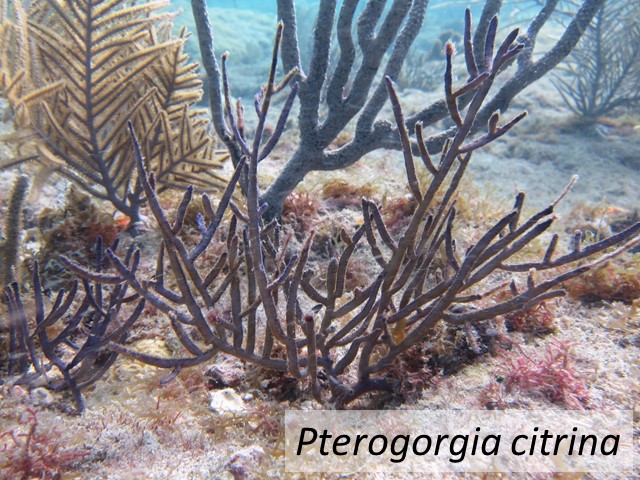
Family: Gorgoniidae
Common Name(s): Yellow sea whip, Yellow ribbon, Gold ribbon, Green lace gorgonian
Colony Form: Small, bushy, with lateral branching, often in one or few planes, usually no more than 30 cm tall (maximum recorded 46 cm)
Axis: Black, cylindrical to slightly compressed.
Branches: Stiff; terminal branches in particular flattened, to 6 mm across and up to 6 cm long; sometimes with small terminal branches arising laterally in irregularly pinnate pattern.
Apertures: Individual slit-like calices along narrow edges of blades.
Mucus: None
Color: Yellow to green; occasional orange to purple; margins purple or with purple calices; polyps white to tan.
Sclerites: Polyp armature: small, blunt rods with few weak bumps or thorns, to 0.08 mm long. Body wall: stout spindles with few to many large simple to complex tubercles, to 0.16 mm long; scaphoids (curved sclerites) stout, compact, often with blunt ends, to 0.16 mm long; ornamentation of crowded complex, sometimes fused tubercles.
Habitat: Inshore, shallow areas from back reefs to patch reefs; 1-10 m depth.
Distribution: South Florida, Bahamas, Caribbean Sea.
Notes: In the other local species of Pterogorgia, P. anceps, polyps arise from a common groove along the length of the blade.
References: Bayer (1961), Cairns (1977), Humann and DeLoach (2002), Collin et al. (2005), Sanchez and Wirshing (2005).
Similar Species: Pterogorgia anceps







